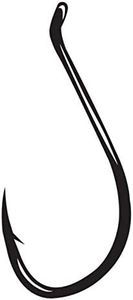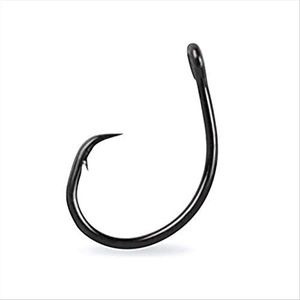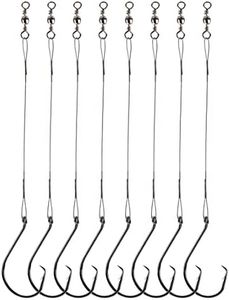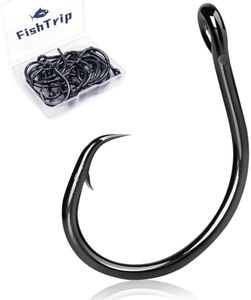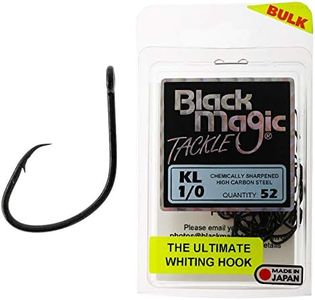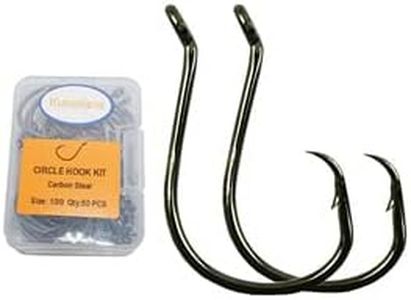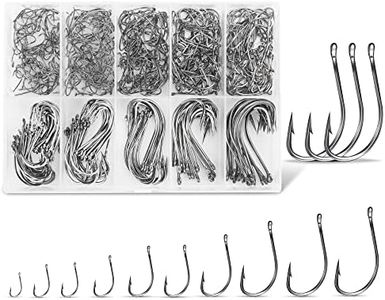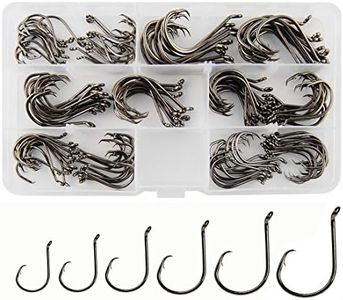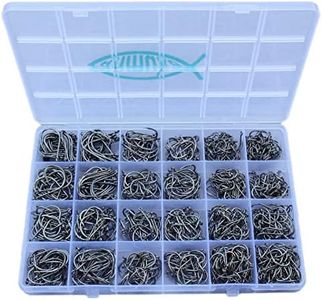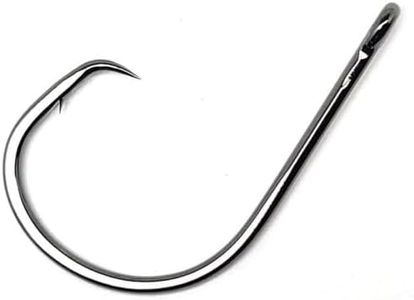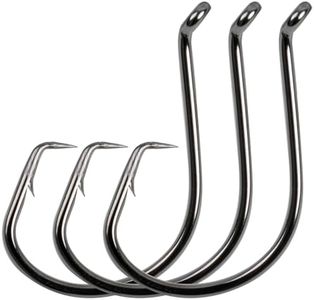We Use CookiesWe use cookies to enhance the security, performance,
functionality and for analytical and promotional activities. By continuing to browse this site you
are agreeing to our privacy policy
10 Best Catfish Hooks
From leading brands and best sellers available on the web.By clicking on a link to a third party's website, log data is shared with that third party.
Buying Guide for the Best Catfish Hooks
Choosing the right catfish hook is essential for a successful fishing trip. The hook is what connects you directly to the fish, so picking one suited to your needs can make a huge difference in both hooking and landing catfish. When selecting a hook, you need to consider how the hook's characteristics match your fishing style, the size of catfish you’re targeting, the bait you plan to use, and the waters in which you'll be fishing. Understanding the common features of catfish hooks will help you navigate the options and make an informed decision.Hook SizeHook size refers to the physical dimensions of the hook. It's important because different sized catfish will require different sized hooks in order to successfully hook and hold the fish. Sizes typically range from small numbers (for smaller hooks) up to larger numbers and aughts (such as '2/0,’ ‘5/0,’ etc.), with bigger numbers or aughts indicating larger hooks. If you’re after channel catfish, a medium-sized hook is typically sufficient, while targeting large flathead or blue catfish may require a larger hook. Always match the hook size to both the bait you’re using and the average size of catfish in your area.
Hook ShapeThere are several shapes, with the most common for catfish being circle hooks, J-hooks, and treble hooks. The shape affects how the hook sets in the fish's mouth and how it holds bait. Circle hooks are designed to hook fish in the corner of the mouth and are less likely to gut-hook the fish, making them popular for catch and release. J-hooks offer versatility but require a firmer hookset, while treble hooks (with three points) are often used for prepared baits but can be harder to remove. Choose your hook shape by considering your preferred fishing method and whether you plan to keep or release the fish.
Wire Gauge/StrengthThe wire gauge refers to the thickness and strength of the hook. This is crucial for handling big, strong catfish that can bend or break weaker hooks. Lighter gauge hooks are less visible and good for smaller catfish, while heavier, stronger hooks are needed for larger fish or heavy current. If you’re fishing where trophy-sized catfish are common, opt for heavy-duty hooks, but if you’re targeting pan-sized fish, a lighter gauge may suffice.
Hook Material/FinishMaterials and coatings affect a hook's durability and resistance to corrosion. Common materials include high-carbon steel and stainless steel. The finish can be bronze, nickel, or black, and each has different corrosion resistance and visibility characteristics. Choose a material and finish that suits the water conditions you’ll be fishing in; for example, stainless and coated hooks are better for saltwater or for situations where your gear may stay wet longer.
Shank LengthShank length is the distance from the hook eye to the bend. Longer shank hooks are easier to remove and ideal for baits like worms, while shorter shank hooks are more compact and work well with chunk bait. Pick a shank length that pairs well with your chosen bait type, making sure it holds the bait securely without interfering with hooking the fish.
Barbed vs. BarblessA barb is a small projection near the hook’s point that helps keep the fish from shaking off. Barbed hooks offer a more secure hold but can be harder to remove, especially for catch-and-release. Barbless hooks are easier on the fish, making them ideal if you plan to release your catch. Think about your approach to fishing and local regulations when choosing between barbed and barbless hooks.


